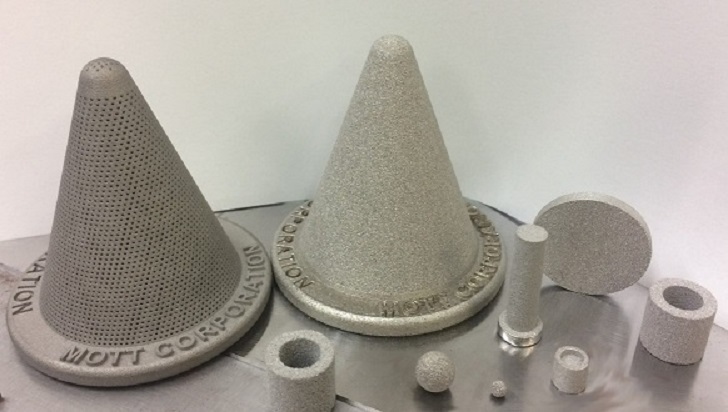
Mott Corporation presented its 3D printing porous technology at the International Conference on Sintering in San Diego last month.
Dr Vince Palumbo, one of Mott’s leading metallurgists and 3D printing experts, spoke to a global audience of industry leaders and researchers about the latest advances and capabilities in porous manufacturing with additive technology. The presentation, Selective Laser Sintering Techniques for Improved Porous Media Performance, was co-authored by Dr James Steele, Dr Aravind Mohanram and Scott Lagocki, Rapid Prototyping Lead Technician.
Mott’s 3D technology is designed to quickly manufacture custom sintered metal filtration and flow control products that provide more uniform pore size distribution and flow permeability in virtually any configuration. This capability allows for the creation of completely customisable porous, solid and porous-solid hybrid solutions.
“Our aim is to drive the future of filtration and flow control science with these new capabilities,” says Palumbo. "To solve the world’s toughest challenges, our customers need new design freedom and capability to meet more demanding specifications and control requirements."
"As part of our future work, we look to combine our proprietary 3D printing techniques with innovative physics-based computational fluid dynamics (CFD) algorithms to aid our customers with rational design of the porous metal and other system components that interface with the porous,” he adds. Mott is working with companies on custom engineered solutions using 3D printed technology and has already helped solve one of the toughest challenges for scientists in the chromatography industry with the customizable PerfectPeak® Static Mixer. Additional products and capabilities are set for release in 2018.




